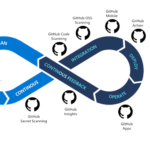Managing Linux server security and performance tuning effectively across different environments including Production, QA, Development, on-premises infrastructure, and cloud platforms requires a detailed and actionable checklist. This master checklist consolidates best practices, environment-specific considerations, and cloud provider specifics (AWS, Azure, GCP) to guide administrators, DevOps engineers, and security professionals in achieving robust, scalable, and compliant Linux infrastructure.
I. Initial Environment Assessment (Linux Servers)
- Document OS version, kernel version, installed packages, and running services.
- Inventory all user accounts, groups, sudoers, and remote access mechanisms (SSH keys, passwords).
- Identify open network ports, firewall configurations, and network interfaces.
- Verify operating system and installed software are fully patched with security updates.
- Confirm SELinux or AppArmor is enabled and properly configured.
- Verify backup schedules, data integrity, and disaster recovery plans.
- Collect baseline CPU, memory, disk I/O, and network utilization metrics.
- Review logging configuration and monitoring tools' presence and health.
- Secure BIOS/firmware: password protect and disable boot from external devices.
- Disable USB/removable media access where not required.
II. Linux Server Security Hardening Checklist
User & Authentication
- Disable root login over SSH.
- Enforce SSH key-based authentication strictly; disable password logins.
- Implement strong password policies using PAM modules (complexity and expiry).
- Remove or lock inactive and legacy user accounts regularly.
- Implement multi-factor authentication (MFA) for Production and QA access.
- Audit and tightly control sudo privileges; log sudo command usage.
- Centralize authentication using LDAP or Kerberos for large scale environments.
Network & Firewall Security
- Minimize open ports; disable all unused services.
- Configure firewalls using nftables or UFW; use whitelist rules.
- Deploy Fail2Ban or similar to block brute-force attacks on SSH and TCP services.
- Restrict remote access to Production and QA through VPN or bastion hosts.
- Disable or securely configure IPv6 if not in use.
- Harden TCP/IP stack (disable ICMP redirects, secure ICMP handling).
System & Kernel
- Enable SELinux or AppArmor in enforcing mode with customized policies.
- Use kernel hardening modules such as LKRG or grsecurity features.
- Disable unneeded kernel modules.
- Apply all kernel security patches promptly.
- Enable Kernel Address Space Layout Randomization (KASLR).
Services & Processes
- Disable or uninstall unnecessary services and daemons.
- Apply resource limits (ulimit) especially in Dev and QA to control runaway processes.
- Run services with least privilege user accounts.
Storage & File System Security
- Use file integrity monitoring tools (AIDE, Tripwire) in Production.
- Set strict file and directory permissions, following least privilege principles.
- Encrypt data partitions and backups using technologies such as LUKS/dm-crypt.
- Enable auditd to track sensitive file access and modifications.
Logging, Monitoring & Incident Response
- Centralize logs using ELK Stack, Graylog, or cloud SIEM tools such as Splunk or Azure Sentinel.
- Enable audit logs and actively monitor for anomalies.
- Review logs regularly using automated tools and alerts.
- Develop and test incident response plans with clear remediation and recovery procedures.
Backup & Recovery
- Automate secure backups with offsite and redundant storage.
- Regularly perform restore tests to verify backup integrity.
- Use versioned and immutable backup storage where applicable.
III. Performance Fine-tuning Checklist
CPU & Memory Optimization
- Apply tuned-adm profiles suited to workload types (e.g., throughput-performance for servers).
- Set CPU affinity for critical processes in Production.
- Enable hugepages for memory-intensive applications such as databases.
- Tune kernel parameters like vm.swappiness and dirty ratios for optimal memory management.
Disk I/O and Storage
- Use optimized I/O schedulers such as 'noop' or 'mq-deadline' for SSDs.
- Enable write caching and tune filesystem mount options (noatime, nodiratime).
- Implement RAID10 for Production servers to balance performance and redundancy.
- Monitor disk health frequently using SMART and schedule periodic filesystem checks.
Network Performance
- Tune TCP parameters (buffers, window scaling) to optimize throughput and latency.
- Leverage network interface bonding or teaming for redundancy and increased bandwidth.
- Use network benchmarking tools like iperf to identify bottlenecks.
Application Tuning
- Adjust performance parameters for JVM, web servers, and databases according to workload.
- Deploy profiling and tracing tools (perf, strace) to identify and resolve bottlenecks.
IV. Linux Security & Performance in Cloud Environments
General Cloud Checklist (AWS, Azure, GCP)
- Implement least privilege IAM policies for all users and services.
- Encrypt data at rest using cloud KMS (AWS KMS, Azure Key Vault, Google KMS).
- Use TLS encryption for data in transit.
- Configure cloud native firewalls/security groups to minimize exposed attack surface.
- Continuously monitor security posture via cloud tools (AWS Security Hub, Azure Defender, GCP Security Command Center).
- Automate patch management using cloud native services or configuration management tools.
- Centralize logs in cloud log services and configure alerting.
- Backup cloud VMs and data using cloud snapshot or backup services.
AWS-Specific Checklist
- Use updated Amazon Linux AMIs patched to the latest version.
- Assign IAM roles to instances with least privilege.
- Configure Security Groups with tight inbound/outbound rules.
- Enable VPC Flow Logs and GuardDuty for network and threat monitoring.
- Use AWS Systems Manager for automation of patching and configuration.
- Leverage AWS Certificate Manager for SSL/TLS certificate management.
- Use CloudTrail to audit API activity comprehensively.
Azure-Specific Checklist
- Utilize Azure RBAC for detailed permissions management.
- Enable Azure Disk Encryption on Linux VMs.
- Configure Azure Firewall and Network Security Groups (NSGs) tightly.
- Use Microsoft Defender for Cloud for workload and VM endpoint protection.
- Synchronize on-prem identities with Azure AD for SSO and MFA.
- Monitor with Azure Monitor and Security Center dashboards.
- Leverage Azure Backup for automated, secure backups.
Google Cloud Platform (GCP) Checklist
- Use latest Linux images with automatic updates enabled.
- Apply IAM roles for least privilege access control.
- Use VPC Service Controls to prevent data exfiltration.
- Enable Cloud Security Command Center for security visibility.
- Use Shielded VM features like Secure Boot and vTPM.
- Monitor logs using Cloud Logging and create alerts for suspicious activity.
- Manage encryption keys via Google KMS.
V. Application Security Checklist (On-Prem & Cloud)
- Conduct secure coding practices and static code analysis regularly.
- Implement strong authentication protocols like OAuth or OIDC.
- Protect applications using Web Application Firewalls (WAF) against common attacks.
- Restrict application privileges using least privilege principles.
- Segment networks to isolate Production, QA, and Dev environments.
- Follow container security best practices when using Docker or Kubernetes.
- Secure API endpoints with authentication and rate limiting.
- Enable detailed logging and audits for applications.
- Automate scanning of dependencies for vulnerabilities.
- Regularly perform penetration tests and vulnerability assessments.
VI. Regular Assessment & Audit Cadence
Daily
- Review system and application logs for anomalous activity.
- Verify all backups completed successfully.
- Monitor and identify new patch releases and begin testing.
Weekly
- Run vulnerability scans across systems and applications.
- Audit user accounts, access logs, and permissions.
- Apply available non-critical OS and application patches.
Monthly
- Perform full security audits including penetration tests.
- Review firewall and network security policies.
- Benchmark system and application performance, tune accordingly.
Quarterly
- Test disaster recovery procedures with backup restoration drills.
- Adjust system and network performance tuning based on observed metrics.
- Conduct refresher security training for IT staff.
Annually
- Review overall security policies and infrastructure architecture.
- Recertify user access privileges and permissions.
- Plan major upgrades or infrastructure changes.
Summary
Applying this master checklist ensures a comprehensive approach to Linux server security and performance tuning across multiple environments—be it Production, QA, Development, on-premises or cloud platforms. Regular patching, careful access control, network hardening, rigorous monitoring, and cloud-native best practices collectively help maintain robust, optimized, and compliant Linux environments.
Use this checklist as a living document—update frequently based on changing technologies, threats, and business requirements to safeguard your critical infrastructure continuously.
If you want expert help tailoring your Linux security and tuning strategy or conducting assessments, contact Stonetusker today.
Further Readings & References
- Linux Server Hardening Steps 2025
- Linux Server Security Hardening Guide 2025
- Fail2Ban Project
- Red Hat Enterprise Linux Performance Tuning Guide
- AWS Linux Security Best Practices
- Azure Operational Security Checklist
- GCP Security Best Practices
- Cloud Application Security Checklist



